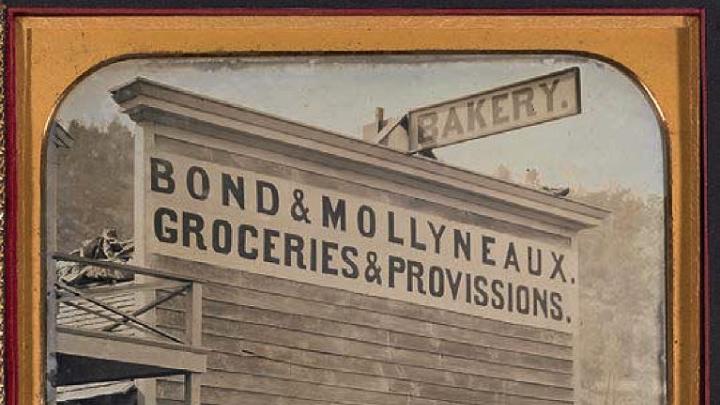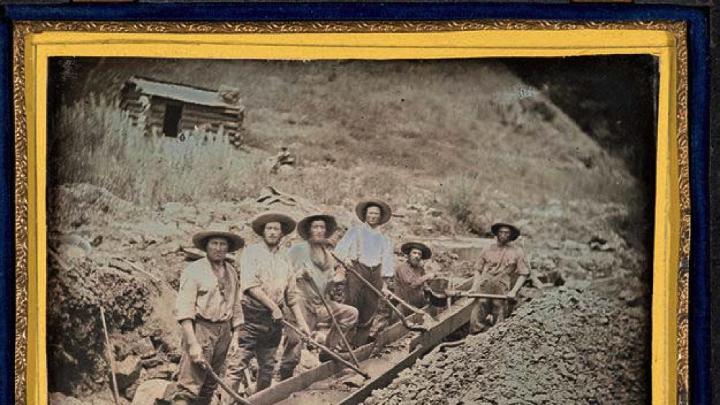The 1848 discovery of gold at Sutter’s Mill launched the dreams and journeys of thousands of people who migrated west to cash in, daguerreotypists among them. “Gold Rush: Daguerreotypes of Early California” (at press time scheduled to be on display at the Peabody Essex Museum through July 12) captures this quintessential era of American history. It was actually the first major American event captured by the early photographic medium, and the real-life images lent credence to rumors of legendary motherlodes. Nearly a hundred images on display reflect untold stories of families and laborers, early mining technology, and the rapid rise of cities, like San Francisco, and smaller “wild West” frontier communities, built around fortune-seeking. “The California Gold Rush was a gamble, and the vast majority were not going to come out rich because of it,” notes Stephanie Tung, associate curator of exhibitions and research. “What we know of the Gold Rush is a mix of both reality and myth.”
Staff Pick: Gold Rush Days



You might also like
Harvard Students form Pro-Palestine Encampment
Protesters set up camp in Harvard Yard.
Artificial Intelligence in the Academy
Harvard symposium assesses the new technology.
How Does Hate Spread?
Harvard symposium probes antisemitic, Islamophobic sentiments
Most popular
More to explore
How is Artificial Intelligence Being Taught at Harvard?
A new Harvard course on artificial intelligence teaches students how to use the tool responsibly.
Civil War American Writer and Abolitionist John Greenleaf Whittier
Homes of the poet and abolitionist, whose verses were said to have inspired Abraham Lincoln.







